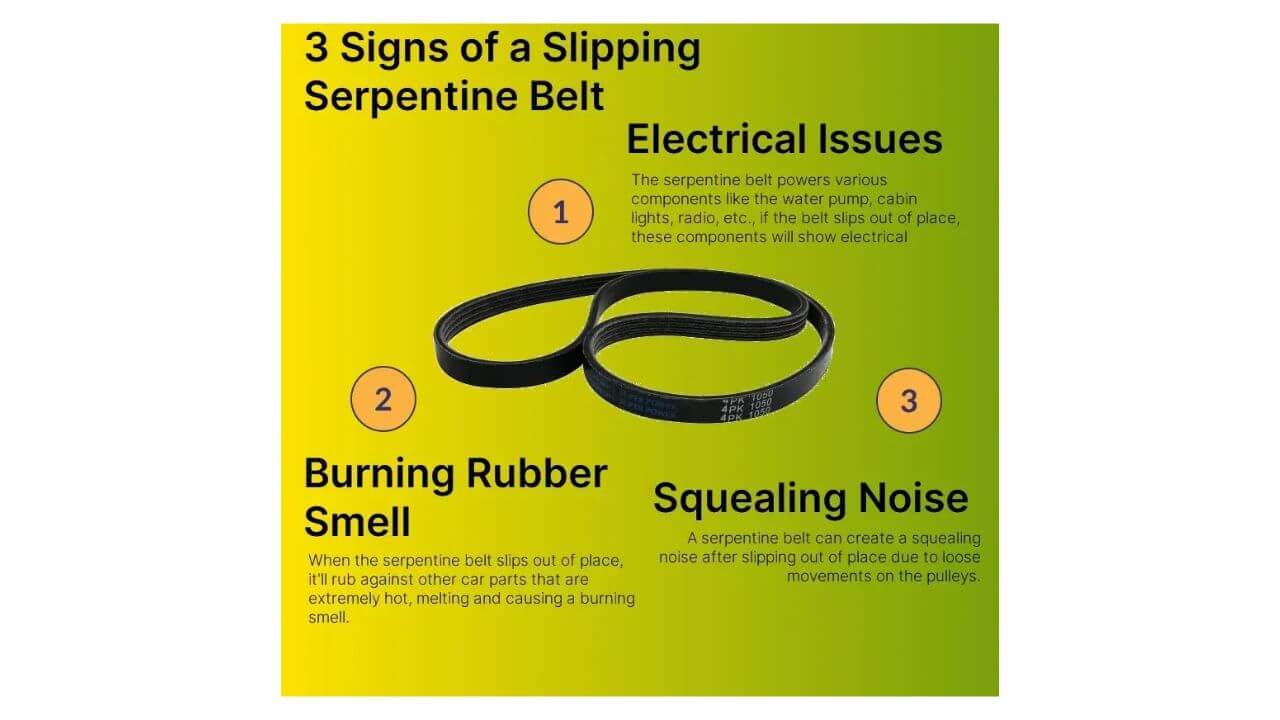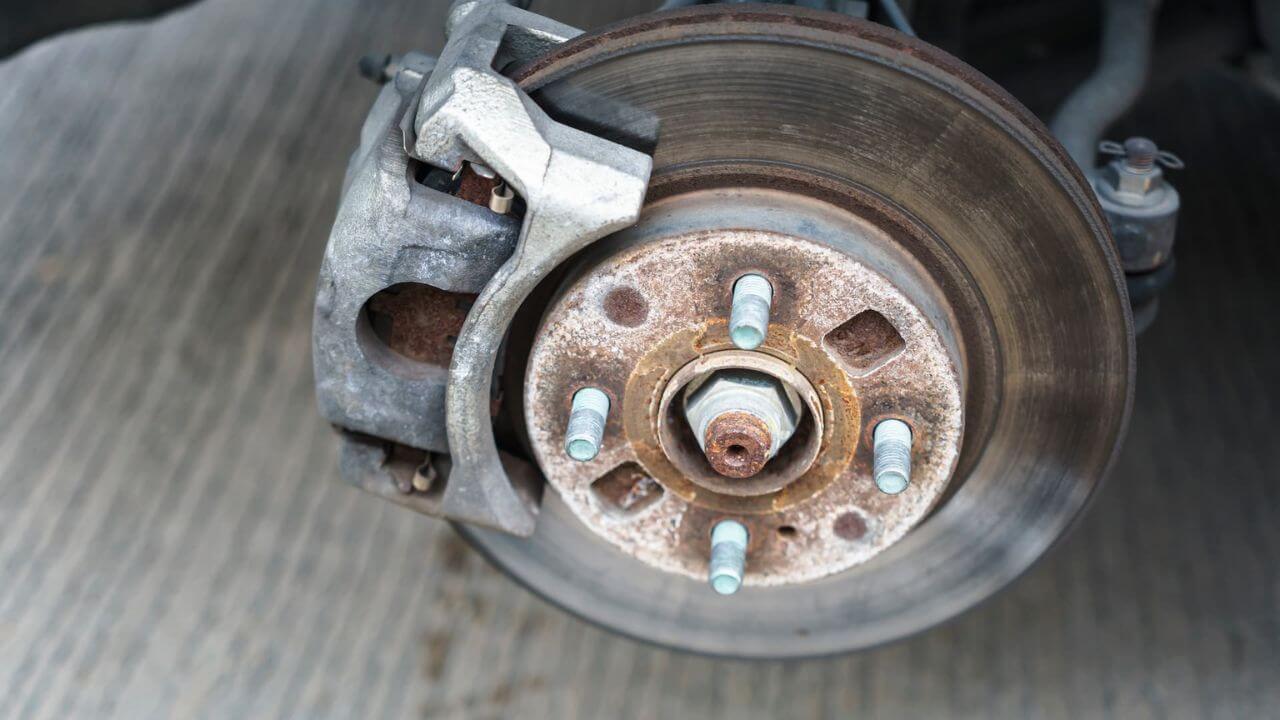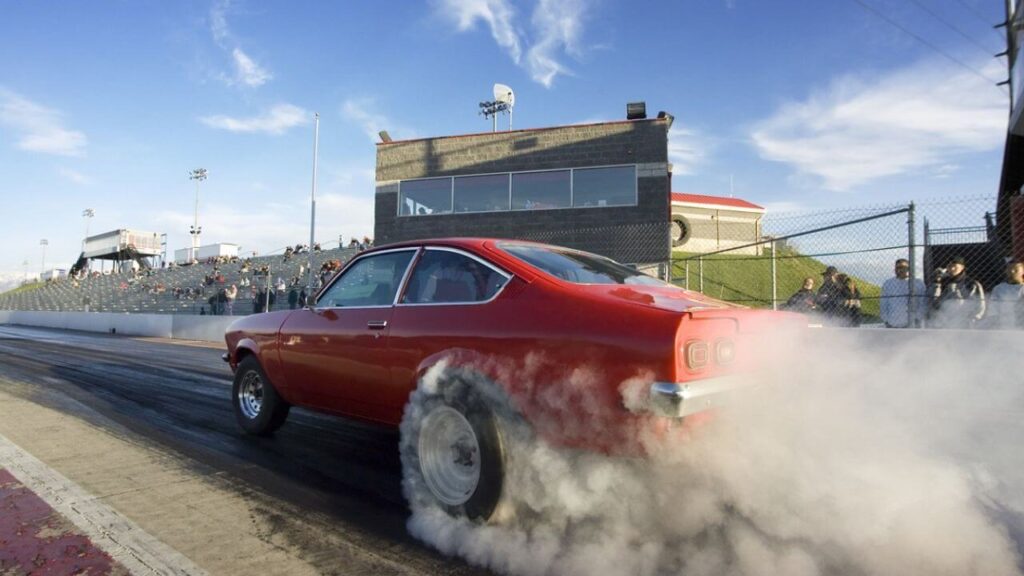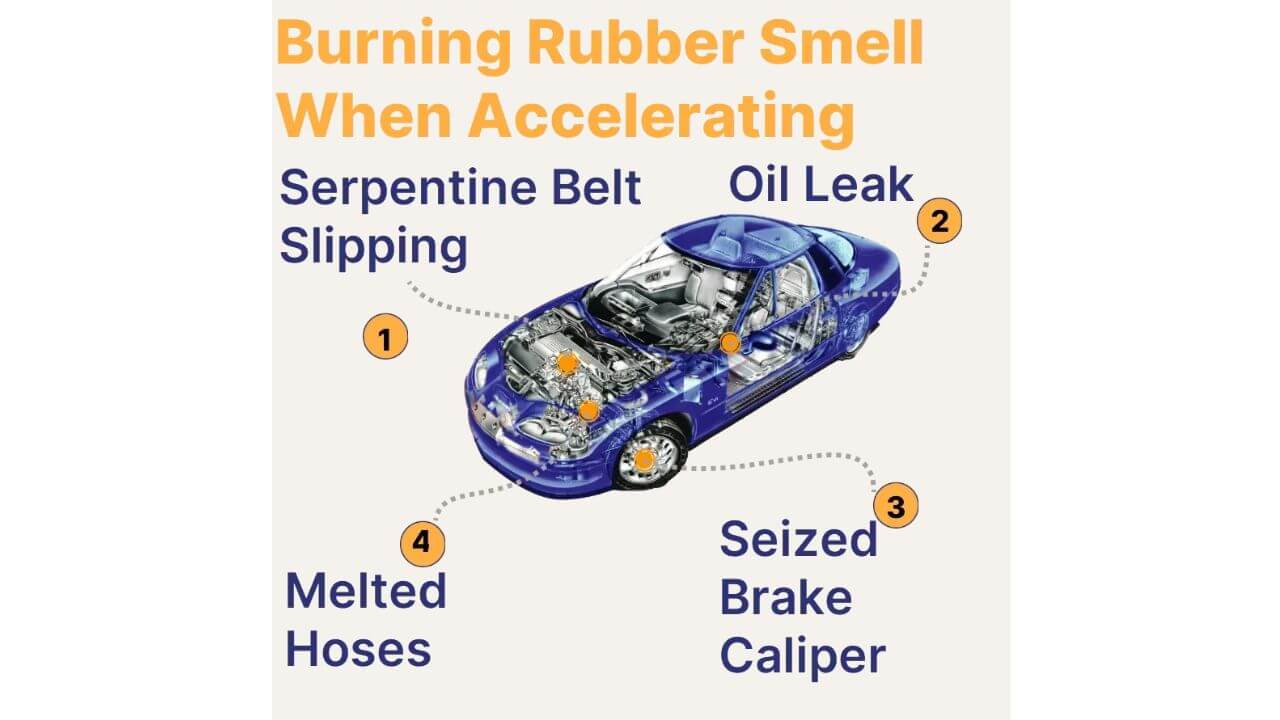When your car smells like burning rubber, it’s a warning sign. Explore causes like belt issues, brake problems, and electrical faults. Expert diagnosis and safety tips included.
It is no longer a mere case of unpleasant smell that makes you feel like you have been in that cabin of your vehicle when you sense the unmistakable smell of burning rubber despite your efforts to close the hood of your car. When your vehicle reeks of burning rubber, this characteristic smell is a normal indication of friction, overheating, or malfunction of parts of your vehicle complex mechanical system. Being aware of the root causes, performing adequate diagnostic measures, and having rapid redress measures can be the difference between a simple repair and a gargantuan mechanical breakdown that has left you on the side of the road, or even endangered your life while on the road.
Diagram of the four typical car problems that lead to the burning of rubber when accelerating, such as slipping serpentine belts and oil spills.
Surveys by car safety enthusiasts have continued to show that the odor of burning rubber in cars is a relatively common omen of larger mechanical faults. The odor is even due to thermal breakdown of rubber compounds under undue heat or mechanical friction, and it could happen in a variety of systems in the vehicle at the same time. The automobiles of today are filled with a number of rubber parts such as belts, hoses, seals, and gaskets that perform very important parts in engine, cooling, braking, and electrical processes.
Science Behind Burning Rubber Odors.
This typical odiferous smell of burning rubber is formed when compounds of rubber decompose thermally, which initiates at relatively low temperatures of approximately 2000C and escalates proportional to the increase in temperature. This degradation is complex and involves the breakdown of polymer chains and the release of volatile organic compounds. Research in materials science reveals that in automotive applications, rubber parts are subjected to thermal, frictional and chemical forces at all times thereby being highly vulnerable to early failure.
Moreover, automotive conditions pose special challenges to the life of rubber. The temperature in the engine bay regularly reaches over 100 o C when the engine is running, and the brake systems can reach temperatures reaching 200 o C when braking hard. These extreme conditions together with the mechanical stress in the form of vibrations and movement provide a situation where the degradation of rubber is very fast. The resultant smell is used as a kind of early warning system given that drivers can know when the components will fail even before they break down.
Studies carried out in automotive engineering journals have suggested that the wear and tear of rubber have predictable characteristics depending on the temperature exposure, mechanical stress and environmental circumstances. Knowledge of these patterns allows car owners and technicians to predict possible failures and put preventive maintenance measures in place to help prolong the life of component parts and enhance car reliability.
Main Reasons behind Burning Rubber Fumes in the Cars.
Serpentine Belt Problems: The Criminal of the Most.
One of the sources of burning rubber odors in automobiles in the present times is a serpentine belt. This one-piece, continuous belt rotates several engine auxiliaries such as the alternator, power steering pump, air conditioning compressor and water pump. When the serpentine belt slips or gets off center or gets caught in something, it produces excessive friction that creates the effect of the burning smell.

According to automotive technicians, the issue of serpentine belt generates about 40 percent of the burning rubber odor complaint. The constant wear of the belt at high tension renders it especially sensitive to the effects of wear and tear, particularly when it comes to the contamination of the belt by oil leakages or coolant spillage. Also, it is possible to notice that belts become loose, and when they slip, they produce heat and the characteristic smell.
Under normal conditions, modern serpentine belts have a lifespan of 60,000-100,000 miles, however, under extreme conditions, contamination, or component failures, the life of these belts may be severely shortened. Specific additives to these belts are to withstand heat and friction, but these protective features are degraded with time, and the belt is exposed to heat damages.
Brake System Overheating: It is a Safety issue of Concern.
Another significant cause of burning rubber smells is brakes system overheating, and it is highly hazardous when unattended. The kinetic energy is transformed into heat by friction between brake pads and rotors when braking and in usual use the temperature in the system can easily reach 150-200 o C. Nevertheless, violent braking, dislocated calipers, or deteriorated parts might lead to temperatures that are not safe and result in burning odors and impaired braking.

Brake system experts say that overheating is most prevalent in stop and go or mountain driving or when pulling heavy loads. The state is also not only evident by the odor burning but physically by the presence of brake fade, squealing, and smoke coming out etc. in extreme cases. Studies show that when brake temperature reaches over 300C degree, brake parts will be permanently damaged and the brake distance will be a lot longer.
Rubber parts in the brake system such as caliper seals and brake hoses are especially susceptible to heat damage. These parts work near the friction surfaces and may wear off easily once subjected to high temperatures. According to professional automotive technicians, any burning smell related to braking must be immediately inspected to eliminate the possibility of a braking failure.
Malfunctions of electrical systems: Conspiracies.
Electrical system issues are another less obvious yet equally hazardous source of burning rubber smells. The average car has miles of wires wrapped in rubber and plastic insulation that are all capable of releasing burning fumes upon overheating. The heat produced by short circuits, overloaded circuits, or damaged wiring harnesses can enough heat insulation to start fires.
According to automotive electrical gurus, electrical burning of rubber odors are usually accompanied by other symptoms, including flickering lights, defective accessories, or dashboard warning lights. Most of the modern cars have insulation made out of soy and rodents love that material, and when chewing, they cut the wires exposing them to hazardous situations. Moreover, improperly installed aftermarket electrical can overload a circuit and lead to insulation failure.
Modern vehicle electrical systems are so complicated that they cannot be diagnosed by untrained individuals. Technicians possess professional equipment which they use to trace electrical faults and determine the integrity of insulation. Due to the danger of fire in the case of electrical breakdown, any smoldering smell that could be of electrical nature must be promptly dealt with by the professional.
Diagnostic Tests of determining the cause.
Techniques of visual inspection.
The first step to the successful diagnosis of burning rubber odors involves routine visual examination of essential vehicle systems. Automotive diagnostic guidelines suggest one begin with the engine bay, which contains the vast majority of the rubber elements and is the location of the concentration of heat. The checkout procedure must be systematic, scanning belts, hoses, electrical appliances, and fluid leakages systematically.
Professional mechanics also stress the necessity to perform inspections during the engine cooling to avoid burns and provide proper evaluation. The visual check up must also involve checking the condition of belts, whether they are cracked, frayed or glazed, checking about the hose whether it is heat damaged or touching a hot surface and whether electrical parts are overheated or melted.
Recording of results in visual examination would be essential in monitoring the progress of the problem and the effectiveness of the repair. Automobile service technicians suggest taking photos of parts that are broken and keeping inspection logs to see any trends that could point to system issues.
State-of-the-Art Diagnostic Procedures.
In the current diagnosis of automotive, the more advanced equipment and techniques are used to locate the exact source of burning rubber smells. Thermal imaging cameras also allow technicians to detect hot spots that may not have been detected using the traditional inspection. These devices are capable of measuring temperature changes that signal stress on components before they are damaged.
Moreover, the electrical diagnosis tools will reveal electrical system issues that cause burning odors. Oscilloscopes, multimeter, and special automotive diagnostic scanners assist the technician in isolating electrical faults as well as the measurement of system performance. The combination of these sophisticated tools and the conventional diagnostic techniques offers all-around assessment capabilities leading to increased accuracy in repair and decreased time in diagnostic procedures.
Automobile professional automotive centers put large sums of money on their diagnostic tools since the identification of problems correctly lowers the cost of repairing the automobile and enhances customer satisfaction. The sophistication of the current car requires advanced methods of diagnosis to approach the problems that cannot be examined just by a simple view to find out the full solution.
Cautionary Measures and Emergency Response.
Emergency Response Procedure.
In the event of a car emitting a burning rubber tone, safety measures should be observed instantly at the expense of driving. Car safety professionals everywhere advise that one pull over immediately and in a safe place, ideally not in the traffic or near a combustible place. The car must be switched off so that no additional heat is produced and combustible substances may be ignited.
The occupants of the vehicle should get out of the vehicle and move to a safe distance as the engine cools once safely stopped. When there are smouldering smells, it may prove hazardous to open the hood as soon as it is noticed because of the possibilities of fire or contact with hot parts. Before they can even commence any inspection of the engine bay, professional emergency responders recommend that one waits at least 30 minutes.
Emergency preparedness involves the possession of relevant fire suppression tools and the ability to employ them efficiently. Flammable liquid class B fire extinguishers are best in automotive fires, but fire extinguishers are also hazardous to use unless one has training to avoid harm. Nevertheless, when the smoke is very thick or flames are visible, evacuation and emergency contacts service takes precedence over fire suppression efforts.
Guidelines of Professional Consultation.
Modern automotive systems are often so complex that professional expertise is necessary to make sure that the problem is resolved safely and effectively. Automotive service professionals have the required equipment, special training, and experience to diagnose complex issues safely. Trying to fix the problem without the necessary knowledge and equipment may only worsen the situation and pose new safety risks.
It is especially important that the suspects of the source of odors are electrical systems, and then the use of professional consultation is essential. Electrical diagnosis involves expert training of automotive wiring systems and proper precautions. Likewise, the issues with brakes systems should be dealt with by professionals as they directly influence the safety and ability to stop the vehicle.
Professional diagnostic cost is often a minor part of the possible expenditure on the component failure or safety accident caused by inappropriate repairs. In addition, it may be followed by professional repairs, which offer an extra warranty of future troubles.
Prevention Strategy and Maintenance Best Practices.
Routine Maintenance Policy.
Preventive maintenance is the best method of preventing the burning rubber odors and the related issues it represents. Maintenance plans used in autos often involve frequent checking of belts and hoses among other rubber parts at certain sections of the total mileages. Such inspections enable early identification of wear patterns and the replacement of wear pattern before it fails.
Special care should be given to the tension, alignment and surface condition of a belt. Belts with correct tension are effective with limited slip and those with correct orientation do not wear prematurely because of rubbing on pulleys or other parts. Frequent cleaning of the surfaces of belts helps in eliminating contamination, which can result in slippery surfaces and the production of heat.
Brake system maintenance involves checking the condition of the pads, rotors, and fluid. To avoid overheating of the system and deterioration of all its parts, it is necessary to keep the correct level of brake fluid and fill it up as often as it is recommended. Also, braking aggressively should be avoided, and engine braking should be employed where possible to relieve thermal stress on the brake parts.
Consideration of the Environment and the Choice of Components.
Rubber component performance and life are highly dependent on environmental factors. Hot and cold temperatures are known to cause deterioration of rubber at a rapid rate and also raise the risk of failure. Likewise, rubber integrity can be damaged, and premature failure can occur as a result of exposure to chemicals like oil, coolant, and road salt.
The choice of components helps to avoid burning rubber smells and to reduce the lifespan of the service. OEM components are usually of high-quality performance and life span than aftermarket ones. Other aftermarket parts, however, provide better heat resistance or chemical compatibility that can be useful in certain applications.
Quality not only considers the initial choice of components but also appropriate installation processes and compatibility of the system with existing ones. Professional installation guarantees proper fitting, tensioning and aligning of components that maximise performance and durability of components. Moreover, reliability in difficult environmental conditions can be greatly enhanced through the use of elements that are tailored to environmental conditions.
Professional Advice and Knowledge.
As mentioned by the top automotive technician Sarah Mitchell, who is ASE Master certified with more than 20 years of experience in diagnostic work, burning rubber odors are typically hazardous: when drivers smell of burning rubber, they are probably observing the early signs of component failure. The point here is that the sooner it is responded to, the better–it is almost guaranteed that by driving with this symptom, it will cause more damage and cost more to fix. I have watched even the easy part of replacing a belt, which becomes a huge engine operation due to negligence on the part of the drivers.
This is observed by Mitchell who reports the majority in the automotive service industry which believes that the odor of burning rubber is an important early warning sign. Professional diagnostic methods put emphasis on comprehensive consideration of all possible causes instead of the most apparent cause. This holistic approach guarantees the proper identification of the problems and elimination of their unnoticed problems that lead to future failures.
The combination of modern diagnostic equipment with the traditional means of troubleshooting is the most recent form of professional service in automotive service. Thermal imaging, electrical testing, and computer-assisted diagnosis offer new understanding of how the vehicle systems and components work and their conditions. They will allow technicians to detect issues at the initial stages and work out more efficient repair solutions.
Results
The appearance Car Smells Like Burning Rubber requires immediate action and systematic diagnosis to avoid component failure, guarantee safety, and reduce costs to a minimum. Knowing the main causes such as issues with serpentine belts, overheating of the brake and electrical issues will help vehicle owners react reasonably and seek the help of professionals, as needed. Modern automotive systems are too sophisticated to be diagnosed and repaired by nonprofessional personnel, especially when electrical systems or safety-critical parts such as the brakes are involved.
The best approach in preventing burning rubber odors and the problems, which are related to it, is preventive maintenance. Periodic inspection plans, correct component choice, and expert installation customs/practices will provide extensive life expectancy to components and enhance vehicle reliability as a whole. The combination of modern diagnostic devices with a set of classic troubleshooting tools offers the automotive professional more opportunities to identify and address complex issues than ever before.
Finally, the burning rubber odors should be regarded as severe warning signs and not as trifles in order to save the money spent on the vehicle and the lives of its occupants. The comparatively low price of timely professional diagnosis and repair is insignificant compared to any repercussions of the components collapse or accidents. This can be achieved by knowing the causes, having effective diagnostic measures, and having the right prevention methods in order to make sure that the transportation is safe, reliable, and the owners avoid unnecessary repair costs.


